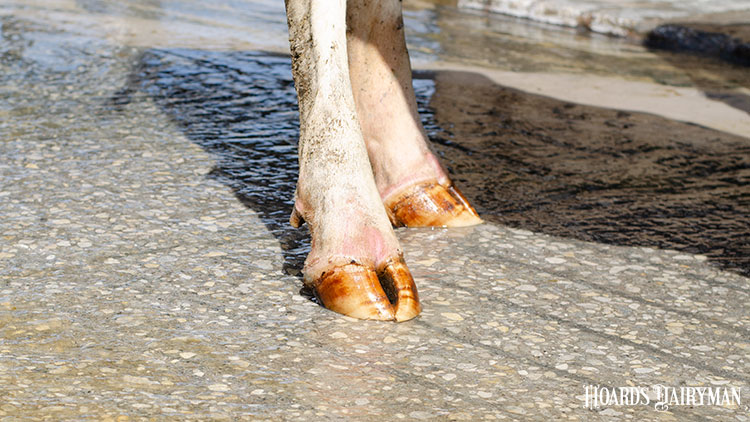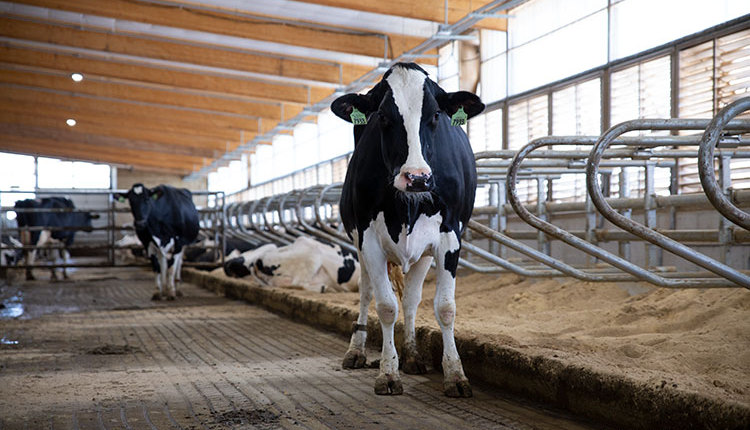
Genetic selection for improved hoof health is one opportunity to reduce lameness, which affects about 50% of dairy cows and results in economic losses, poor health, and suboptimal animal welfare.
To date, some proprietary genetic predictions for lameness are available. However, genetic evaluations for lameness based on the National Cooperator Database have been elusive. A group led by the Council on Dairy Cattle Breeding (CDCB) is working to change that.
As the first essential step, CDCB, the University of Minnesota, and several collaborators are working to create a pipeline for hoof health data collection. CDCB geneticists have analyzed and will soon present preliminary data collected through the project. Kristen Gaddis, a CDCB geneticist, will present the hoof health findings during the Lameness in Ruminants conference, August 1 to 5, 2022, in Minneapolis, Minn.
What’s the challenge?
For several years, dairy producers have been able to select genetics that improve cow fertility, mastitis, and resistance to health disorders such as ketosis and metritis. Naturally, we have also been exploring the genetics around lameness using the National Cooperator Database, the world’s largest database of animal genotypes and phenotypes (performance records).
When Gaddis and other geneticists assessed the lameness records in our current U.S. data system, the data was inconsistently documented and resulted in very low heritabilities. An adequate genetic evaluation needs accurate lameness records incorporated into our National Cooperator Database of dairy phenotypes and genotypes.
This project led by CDCB and the University of Minnesota brings together dairy farms, hoof trimmers, technology developers, and many others to objectively identify lame cows, develop a data pipeline, and use that data to make on-farm decisions, document change, and develop genetic evaluations.
That data pipeline is the essential first step to develop genetic evaluations for related traits using the National Cooperator Database.
Progress in data collection
We’re approaching data collection in a few different ways. First, we can more effectively and consistently track some records from the estimated 9 million hoof trimming sessions that occur each year on U.S. dairy farms. Based on these statistics, we can collect enough hoof health records, or phenotypes, to develop genetic prediction models that will help dairy farmers to select cows that can better resist hoof and locomotion problems. Gerard Cramer, a veterinarian with the University of Minnesota, has recently facilitated focus groups with hoof trimmers and farm personnel, so that we can identify needs and action steps to build an effective pipeline of hoof health data.
Concurrently, we have an on-farm project underway to practically understand how we can leverage technology to collect the relevant data. In January 2022, farm managers and hoof trimmers began collecting hoof health data at a partnering large herd in northwest Iowa. At the same farm, mobility and lameness data is captured using a Video Analytic Platform (VAP) that was supplied, installed, and operated by the CattleEye company. Regular meetings between CDCB, CattleEye, dairy farm managers, and an information technology (IT) service provider are taking place to develop an automatic data streaming procedure that will merge all on-farm collected information into a mobility/hoof health data pipeline.
How can you get involved?
The first data analysis from the CDCB-UMN project will be presented Wednesday, August 1, during the Lameness in Ruminants Conference. This event will attract an international audience of researchers, veterinarians, dairy producers, hoof trimmers, students, and industry representatives from around the world. The five-day conference will provide training and education around the most current research and practices to help enhance large and small ruminant hoof health. Find details and register at https://lamenessinruminants2022.com.
To learn about participation in the lesion-related lameness study at UMN, click here or email umnhoofhealth@umn.edu.
With continued collaboration, we can implement genetic and management solutions to improve the hoof health and reduce lameness in our dairy herds. The opportunity to reduce lameness is quite exciting and will make an impact for dairy farm economics, cow health, and animal welfare. With automation and new technologies, we can use objective and frequent data to help producers reduce the prevalence of lameness quite quickly, by detecting early and reducing the duration of lameness.







